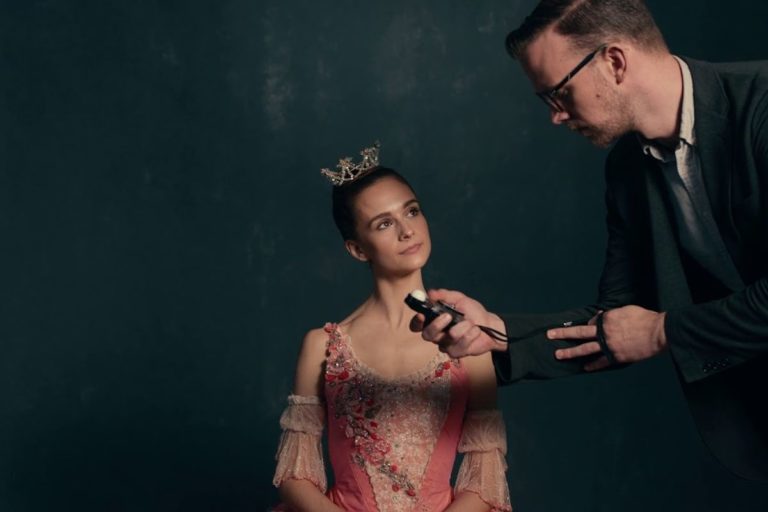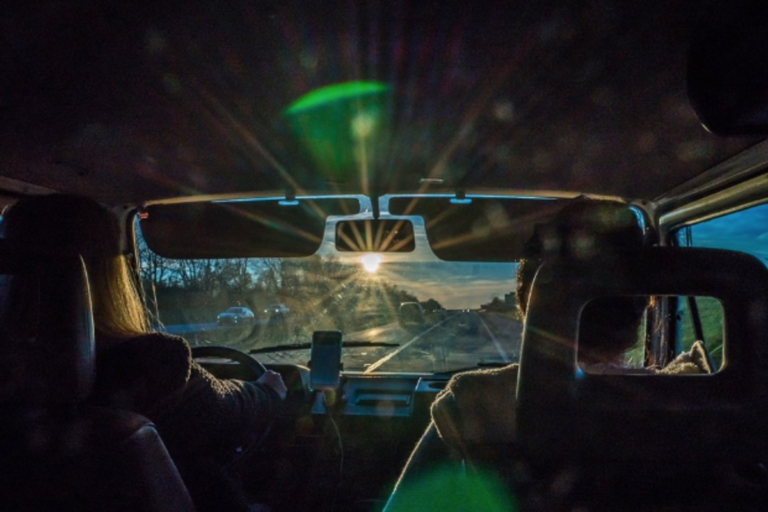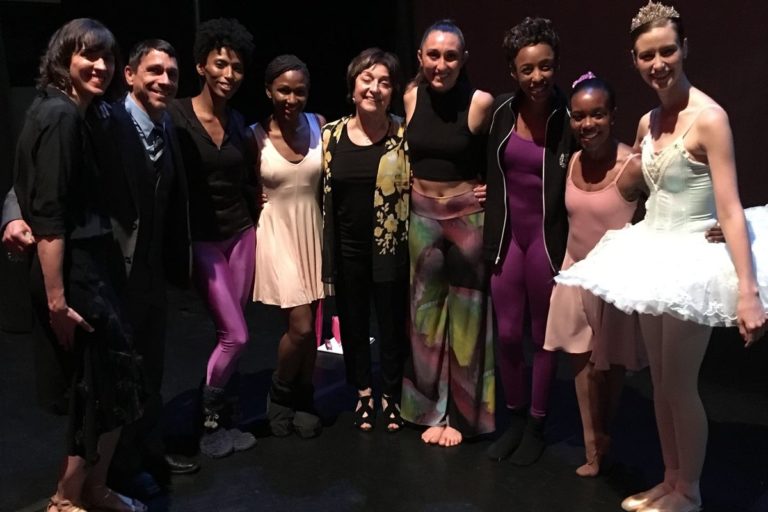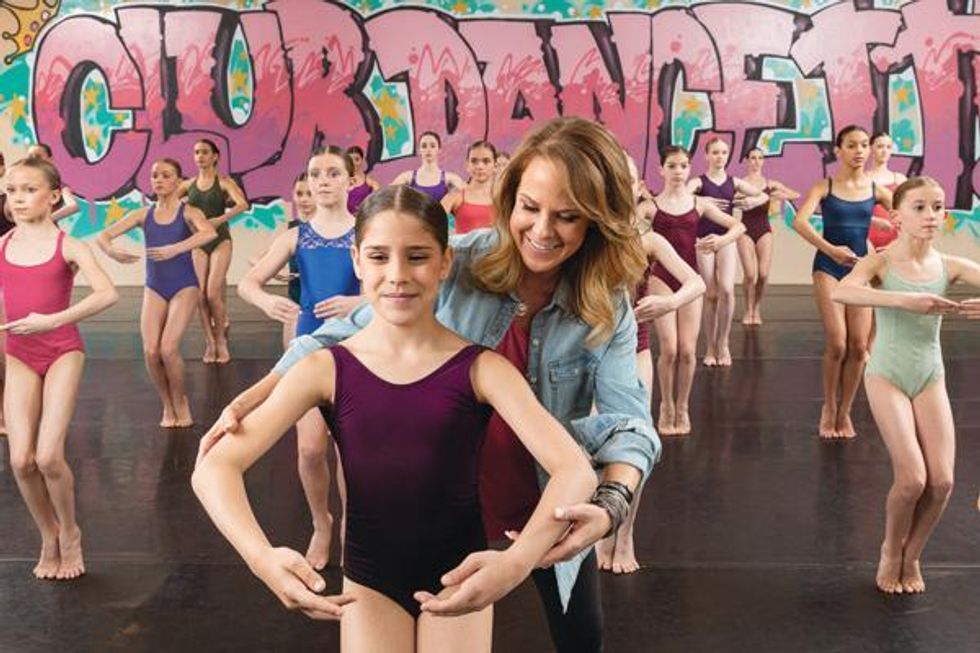
Miss Kim leads class at Kelli Wilkins’ Club Dance studio in Phoenix.”Whether I’m in a room of 40 or 400 kids, I’m going to find a way to make a difference in some way, shape, or form,” says Kim McSwain about the inspirational, upbeat teaching style that’s become her calling card with students and teachers alike. “Anyone who knows me knows how strongly I feel about changing kids’ lives.”
The 40-year old teacher has become a staple on the convention circuit during her 13 years with Break the Floor, most recently on faculty of NUVO; and her workshops at the Dance Teacher Summit are standing room-only. Though she teaches everything from jazz funk to technique to musical theatre, all of her classes are equal parts movement and motivation—which leaves a lasting impression.
“Parents write me that their children who were bullied now feel ready to take on the world,” she says. “I get a lot of that type of feedback—like ‘I didn’t feel fat in your class’ or ‘I quit doing drugs.’ I’ve heard every heartwarming story you can imagine—that’s what keeps me going.”
Making Connections
In the fast-paced convention setting where hundreds of students come through each weekend, it can be a challenge to forge meaningful connections. But that’s exactly what McSwain prides herself on doing. “Working as a convention teacher versus being in the studio is a whole different ballgame,” she says. “I go in with the mindset of, ‘How can I make sure every single child in this room leaves being inspired?'”
 Photo by John Burcham
Photo by John Burcham
McSwain visits Club Dance monthly to work with dancers. Her secret is to find common ground—even when the room is filled with vastly different dance abilities, appearances and personal backgrounds. “All kids have different learning curves, and the second they shut down, you need to keep them engaged,” says McSwain. “It’s about leaving them challenged without feeling defeated.”
Her “back to basics” style of choreography is specifically designed to resonate with dancers across the spectrum. She levels the playing field by gravitating to the underdog rather than the best dancers in the room: “When they see what I praise, it becomes a generous, open environment.”
She also changes her approach markedly depending on the audience. McSwain jokes that her partner of 12 years says she has a “split personality” when switching between mini and teen classes—and, for her, that’s the mark of a job done right. “I believe in finding a way to relate to every age and every level,” she says. “I change my voice, the music, and the tempo for each age division to see immediate results.”
When Kelli Wilkins, owner of Club Dance Studio in Phoenix observed this chameleon-like ability at NUVO, she invited McSwain into her studio for a regular monthly guest residency. “She will find a way to touch every single kid in the classroom, whether with a correction or a compliment,” says Wilkins, who has now been working with McSwain for four years. “Every single kid leaves feeling like Miss Kim loves them, and for me as a studio owner, that’s priceless.”
Setting a Vision
Had McSwain not become a dance teacher, she could have been a life coach. She often uses journaling exercises to help students pinpoint their goals, strengths, and dreams. One of her favorite prompts is, “You’ve just left your convention but you forgot your dance bag. When you go back for it, you hear all of the teachers talking about you. What would they be saying that would make you feel like a million bucks?”
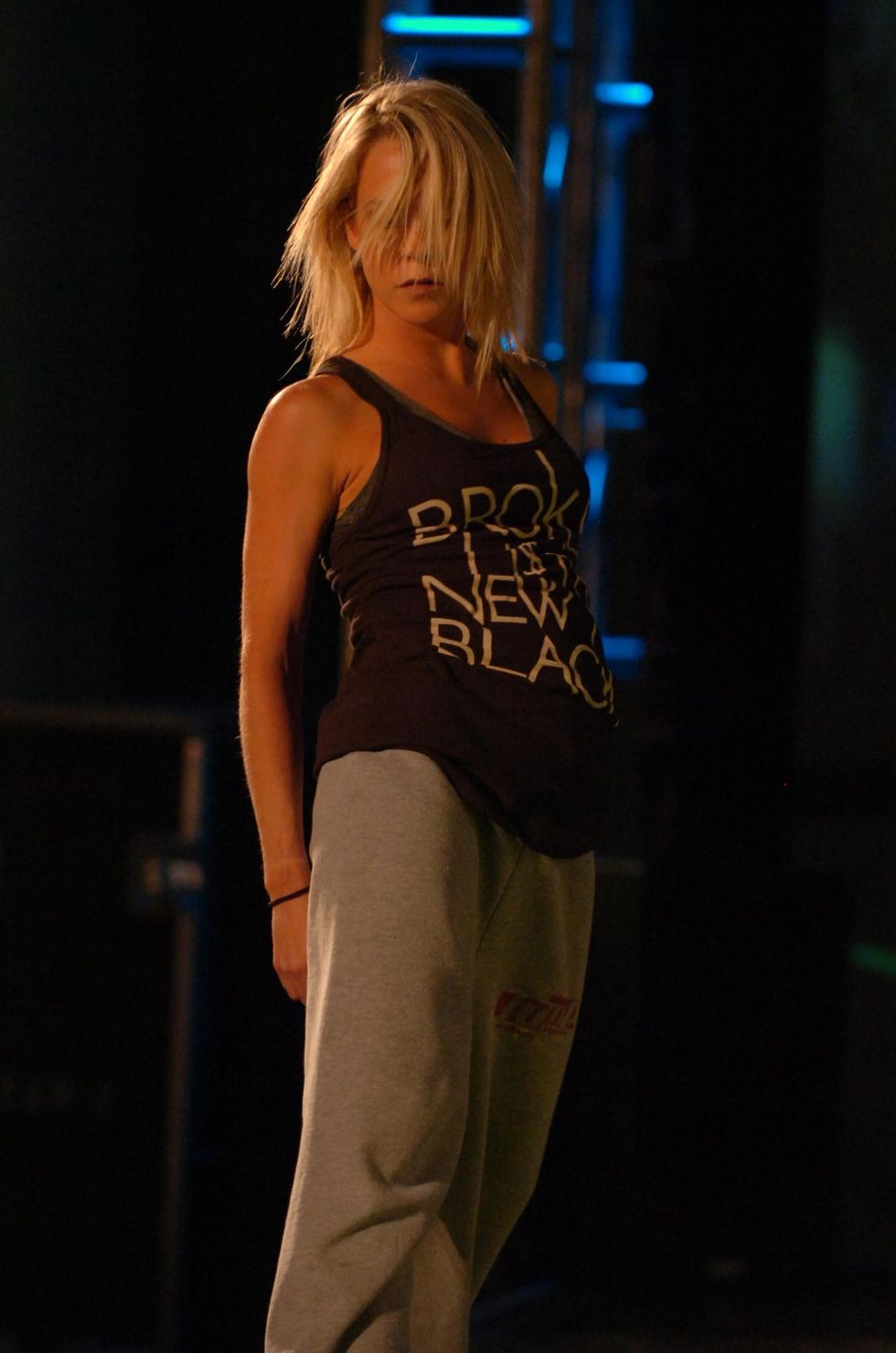 Goal-setting is another integral part of her classes, usually relating to personal development rather than achieving new dance skills. Photos courtesy of Break the Floor
Goal-setting is another integral part of her classes, usually relating to personal development rather than achieving new dance skills. Photos courtesy of Break the Floor
“The most important thing we as dance teachers are doing is trying to affect these lives in a positive manner,” says McSwain. “We’re not just training successful dancers, but successful people who will go on and do great things with the excellence you’ve instilled in them.”
For “goal of the week” she might suggest the dancers commit to not saying anything negative for seven days. Or she’ll encourage them to design their own bigger-picture vision for “how to be a better person and change the world.”
One thing that helps her connect is an openness about her own trials and tribulations. “I set the tone immediately by letting them know there is nothing different about us other than that I’m much older. And I’m honest about the insecurities I had as a teenager,” she says.
No stranger to adversity, McSwain lost her first husband in a military jet collision and later suffered a crippling injury that almost ended her dance career. “My life hasn’t been perfect by any means—they see where I’m at now, and it’s only by the grace of God.”
Next Steps
McSwain announced in May that she would be leaving the convention circuit to begin a studio consulting practice. She plans to expand on the guest residencies and master classes she’s been doing the past five years alongside her convention work. She will train not only students, but also their teachers, working with them to set an ongoing curriculum. For certain clients, McSwain may return on a monthly basis (as she had done at Club Dance) as part of an overall “studio makeover.”
“I enjoyed every second of working at conventions, but I didn’t get to see progress,” she says. “Now I’m able to go back month to month and see the improvement in children and the smiles on their faces. And if I can mentor a teacher who has 300 kids, I’m touching even more people that way.”
Among other ideas, she has plans for a series of parent-friendly “Elite Training” workshops around the Dallas area. It’s all part of an effort to stay closer to home, aka Plano, Texas, where she resides with her partner Matt and daughters Bella and Charli Grace. “I read The Happiness Project last year before I turned 40 and thought about what I would change,” she says. “I was only getting about three to four hours of sleep a night, and I was home only four weekends out of the year. I knew I needed to slow down a bit.”
It’s hard to picture this dynamo slowing down much, but her new business will allow her to spend more time with her family and deepen her impact on the dance world—her two sweet spots. “The more I’ve focused on what I can do for others,” she says, “the more I’ve found the joy in every day,” she says.
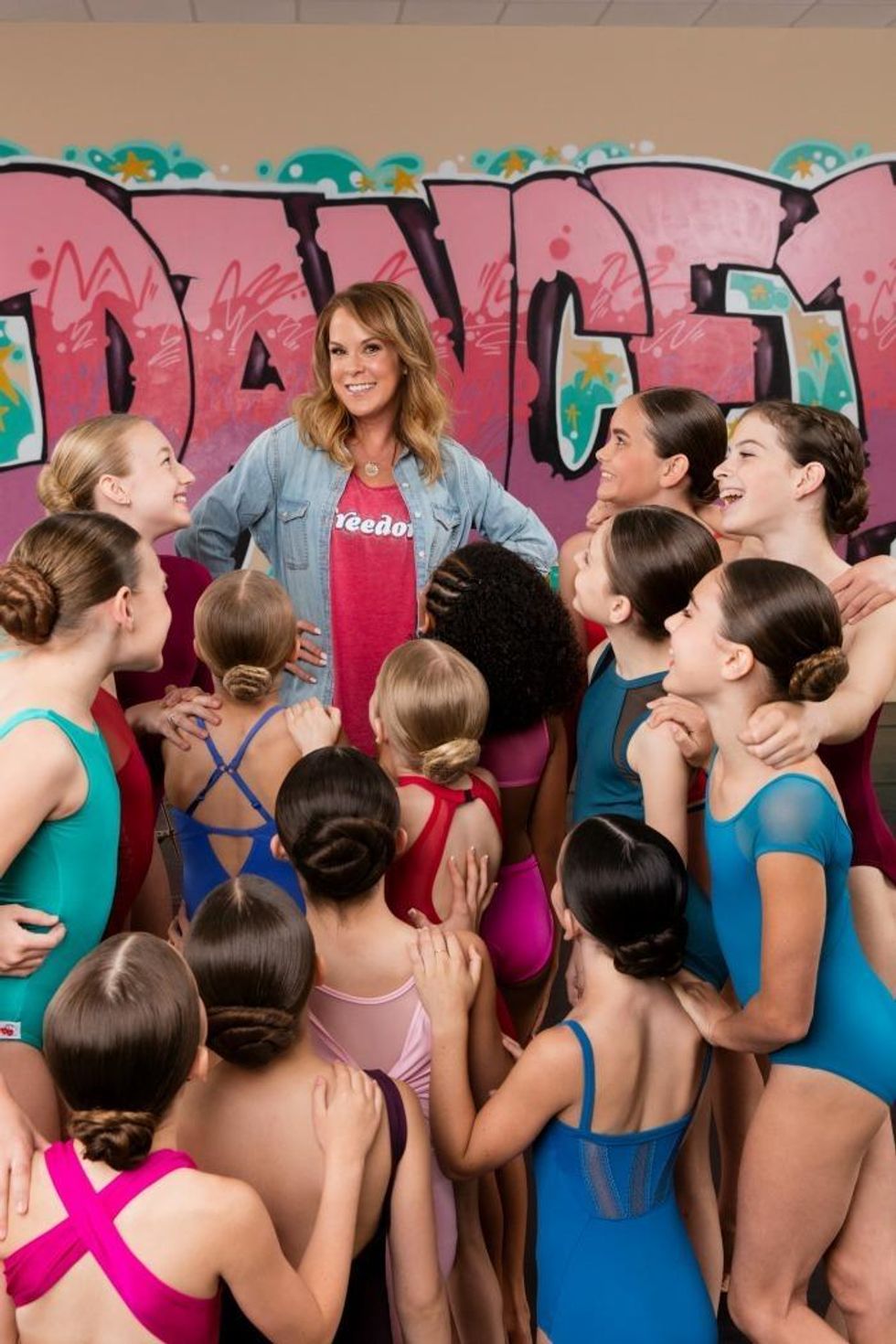 Photo by John Burcham
Photo by John Burcham
Maximizing Mini Time
Kim McSwain has a secret for resonating with dancers in the mini’s room: she’s become fluent in kidspeak. “I get down on their level,” she says about her favorite age group. Here are a few of her tried-and-true tips for reaching the under-10 crowd:
Hit the right note. Using popular music is a great way to incentivize and energize young dancers. Along with using Kidz Bop songs to ensure appropriate lyrics, McSwain enlists her 9-year-old daughter, Bella, to make custom playlists for her classes.
Add whimsical touches. McSwain makes class memorable by passing out friendship bracelets and carrying around smelly markers. “I’ll take the marker out and write ‘I love you’ on their hands when they do something awesome,” she says.
Make the basics more accessible. McSwain is a big proponent of proper progression, so she spends a lot of time focusing on body alignment and placement—not always the most kid-friendly topics. To establish common ground, she turns her instructions into silly songs and funny analogies (like telling dancers to picture “a cat named Jack Stanley” hiding under their feet during relevés). Her favorite song goes like this: “My shoulders are down and out/and my ribs are always closed/I’ve got my belly to my spine, my tailbone down, and a smile is on my face. Uh-huh!”
It all comes down to one three-letter word: f-u-n. “The best thing you can do is let every bit of pride out and have the most fun you’ve ever had with a group of kids,” she says. “I’m pretty much a walking circus act.”
